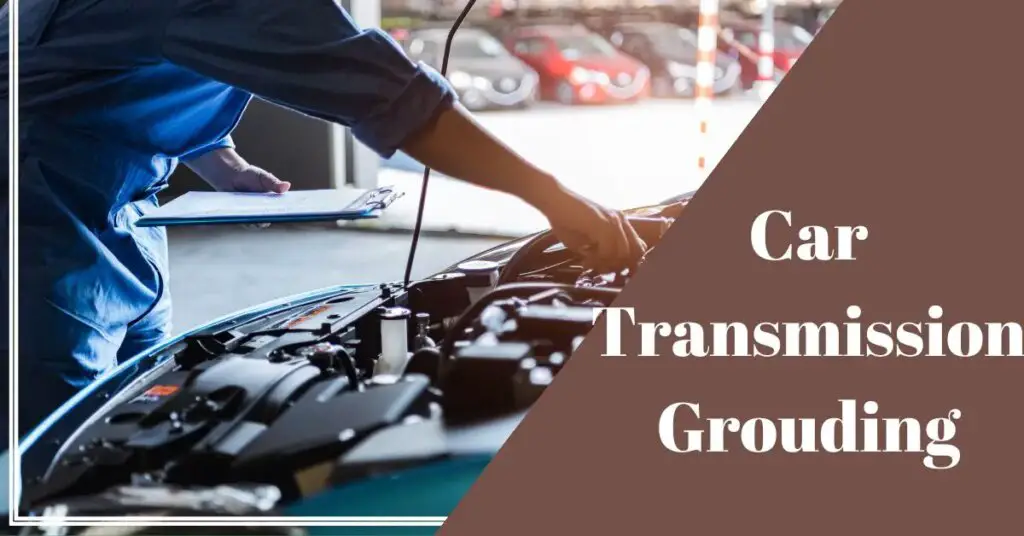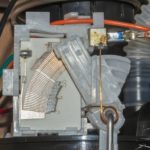Are you looking for bad transmission ground symptoms?
Ever wondered why your car stalls unexpectedly or shifts gears with a mind of its own? The secret might lie in the world of transmission grounding.
In this guide, we’ll unravel the mystery behind bad transmission grounding and its impact. From quirky gear shifts to preventing a breakdown, we’ve got your answers.
Unveil the keys to a smoother, safer ride – read on to master the art of keeping your wheels grounded!
Table of Contents
What is Transmission Grounding?
Transmission grounding refers to the practice of establishing a reliable electrical connection between various components of a vehicle’s transmission system and the ground, or the Earth. This connection serves as a pathway for electrical currents to flow safely into the ground, preventing the buildup of static electricity or other electrical issues within the transmission system.
Proper transmission grounding is essential for ensuring the safe and efficient operation of a vehicle’s transmission and its associated components.
The importance of proper grounding in vehicle transmissions includes:
- Safety: Grounding helps to dissipate static charges and prevents the accumulation of electrical energy that could lead to sparks or even fires. It protects both the vehicle and its occupants from potential electrical hazards.
- Electromagnetic Interference (EMI) and Radio Frequency Interference (RFI) Mitigation: In modern vehicles, there are numerous electronic components that can emit electromagnetic radiation or be susceptible to interference. Proper grounding helps to reduce EMI and RFI, ensuring that electronic systems function correctly without disruptions.
- Component Protection: Grounding helps prevent voltage surges or spikes from damaging sensitive transmission components, such as sensors, solenoids, and control modules. It also reduces the risk of corrosion and deterioration of electrical connections.
- Stability and Performance: Proper grounding helps maintain consistent and reliable electrical signals within the transmission system. This is crucial for the accurate operation of various transmission components, leading to improved overall performance and smoother shifting.
- Diagnostic Accuracy: A well-grounded transmission system contributes to accurate diagnostic procedures. When electrical connections are reliable, mechanics can better identify and address any potential issues within the transmission.
- Compliance with Regulations: Many safety and performance standards in the automotive industry require proper grounding to ensure vehicles meet regulatory requirements.
To achieve proper transmission grounding, manufacturers typically design vehicles with specific grounding points and pathways, often using metal components, conductive materials, and grounding straps to create a low-resistance connection between the transmission components and the chassis of the vehicle.
Regular maintenance and inspections are also important to ensure that grounding connections remain intact and effective over time.
Common Bad Transmission Ground Symptoms
1. Erratic Gear Shifting
- Transmission slipping between gears: Inconsistent grounding can disrupt electrical signals, leading to improper engagement of transmission gears.
- Delayed or harsh shifting: Poor grounding can result in delayed or abrupt gear changes due to interrupted communication between transmission components.
2. Electrical Glitches
- Dashboard warning lights: Inadequate grounding may trigger false signals to the vehicle’s computer, causing warning lights to illuminate.
- Malfunctioning gauges and indicators: Erratic grounding can lead to inaccurate readings on gauges and indicators, affecting the driver’s ability to monitor the vehicle’s status.
3. Poor Acceleration and Performance
- Sluggish response when accelerating: Insufficient grounding can hinder the proper functioning of transmission components responsible for power delivery.
- Loss of power during driving: Inconsistent grounding may lead to intermittent power interruptions, affecting the vehicle’s ability to maintain consistent speed and acceleration.
4. Overheating Transmission
- Transmission temperature spikes: Inadequate grounding can result in increased resistance and electrical heat, potentially contributing to transmission overheating.
- Increased risk of damage and wear: Overheating due to poor grounding can accelerate wear and damage to transmission components.
5. Strange Noises
Whining, grinding, or humming sounds: Inconsistent grounding can cause electrical interference, which may manifest as unusual noises in the transmission system.
6. Inconsistent Revving
Engine revs without corresponding acceleration: Faulty grounding can lead to miscommunication between the engine and transmission, causing erratic engine revving without proportional acceleration.
7. Transmission Lockup Issues
Failure to disengage clutch properly: Poor grounding can disrupt the communication between the clutch control system and the transmission, leading to problems with clutch engagement and disengagement.
8. Unusual Odors
Burning smells from the transmission: Inadequate grounding can lead to overheating, which may result in burning odors from stressed transmission components.
In all these cases, proper grounding is essential to maintain the integrity of the electrical signals within the transmission system. Ensuring a reliable ground connection helps prevent these issues and maintains the overall health and performance of the transmission and the vehicle.
Causes of Bad Transmission Grounding
Corrosion and Rust
- Effects of moisture and salt on grounding components: Moisture and salt can lead to corrosion on metal components, including grounding connections, reducing their conductivity.
- How rust weakens the transmission ground: Corroded grounding points offer higher resistance, hindering the flow of electrical current and causing erratic signals, which can lead to transmission issues.
Loose or Damaged Wiring
- Impact of frayed or disconnected wires: Wires that are frayed, damaged, or disconnected disrupt the electrical pathway, resulting in poor or intermittent grounding.
- Steps to identify and repair wiring issues: Regular inspections, addressing visible damage, and proper wire routing and securing are necessary to maintain effective transmission grounding.
Poor Grounding Points
- Importance of proper grounding locations: Grounding points should be in direct contact with the vehicle’s chassis or other designated grounding points. These locations provide a low-resistance pathway for electrical currents.
- Common mistakes in grounding point selection: Using painted or corroded surfaces as grounding points, or attaching grounds to non-metallic or poorly conducting components, can compromise the effectiveness of the grounding connection.
To prevent these causes and maintain a good transmission grounding:
- Regular Maintenance: Inspect grounding points and wiring during routine vehicle maintenance to identify any signs of corrosion, rust, or damage.
- Use of Corrosion-Resistant Materials: When establishing grounding connections, use materials that are resistant to corrosion and rust, such as copper or stainless steel.
- Proper Grounding Points: Ensure that grounding points are established on clean, unpainted metal surfaces that provide a direct path to the vehicle’s chassis or designated grounding points.
- Secure Wiring: Keep wiring properly secured and protected to prevent friction, wear, and damage that can compromise the integrity of the grounding connection.
- Dielectric Grease: Apply dielectric grease to grounding connections to help prevent moisture and corrosion from affecting the connection.
- Professional Inspection: If you suspect poor transmission grounding, have your vehicle inspected by a qualified mechanic who can diagnose and address grounding-related issues.
Remember that maintaining a proper transmission grounding system is essential for the safe and reliable operation of your vehicle’s transmission and electrical components. Neglecting grounding issues can lead to a range of problems that affect the vehicle’s performance and safety.
Diagnosing and Resolving Bad Transmission Ground Issues
Visual Inspection
- How to visually inspect grounding components: Inspect grounding points and connections for signs of corrosion, rust, loose connections, or damaged wires.
- Signs of corrosion, damage, or loose connections: Look for green or white powdery deposits, frayed or disconnected wires, and any physical damage to grounding components.
Multimeter Testing
- Using a multimeter to measure resistance: Set your multimeter to the resistance (ohms) setting and measure the resistance between the transmission component and the vehicle’s chassis or another known grounding point.
- Interpreting test results for grounding health: A healthy ground connection will show low or zero resistance (close to 0 ohms). Higher resistance indicates a poor ground.
Cleaning and Maintenance
- Step-by-step guide to cleaning grounding points: Disconnect the battery, remove corrosion using a wire brush or abrasive pad, apply dielectric grease, and reattach the connections securely.
- Preventive maintenance tips: Periodically inspect and clean grounding points, apply dielectric grease, and ensure wires are properly secured and protected.
Wire Replacement
- Identifying and replacing damaged wires: Inspect wiring for fraying, cuts, or other damage. Replace damaged wires with appropriate gauge wires and ensure proper connections.
- Ensuring secure connections: Use crimp connectors or soldering to ensure secure connections between wires and grounding points.
Professional Help
- When to seek assistance from a mechanic: If you’re unsure about the diagnosis or if issues persist after DIY attempts, consult a qualified mechanic.
- Expert diagnosis and repair: Mechanics can perform in-depth diagnostics using specialized tools and equipment to identify and address complex grounding issues.
Remember these general safety precautions when working on your vehicle’s electrical system:
- Always disconnect the vehicle’s battery before working on electrical components to prevent electrical shock and damage.
- Wear appropriate safety gear, such as gloves and safety glasses, when handling electrical components.
- Follow the vehicle’s service manual or manufacturer’s recommendations for proper grounding procedures and component locations.
Diagnosing and resolving bad transmission ground issues can be relatively straightforward for minor cases, but more complex problems may require professional assistance. Proper maintenance and addressing grounding issues promptly will help ensure the reliable operation of your vehicle’s transmission and electrical systems.
Frequently Asked Questions
Can bad transmission ground cause my vehicle to stall?
Yes, a bad transmission ground can disrupt the communication and operation of various transmission components, potentially leading to stalling or other drivability issues.
Are DIY fixes recommended for transmission grounding issues?
Simple visual inspections and cleaning of grounding points can often be performed as DIY fixes. However, if you’re not familiar with electrical systems, or if the problem is complex, seeking professional help is recommended.
How frequently should I check my vehicle’s transmission ground?
It’s a good practice to include grounding checks during regular maintenance. Inspect every few months or if you notice any electrical or transmission-related issues.
What safety precautions should I take when working on grounding components?
Always disconnect the battery before working on electrical components, wear safety gear, follow proper grounding procedures, and refer to the vehicle’s service manual.
Is corrosion the primary cause of bad transmission grounding?
Corrosion is one of the common causes, but loose or damaged wiring, poor grounding points, and other factors can also contribute to bad transmission grounding.
Can a bad ground affect other vehicle systems as well?
Yes, a bad ground can affect various electrical systems in the vehicle, including lighting, sensors, engine performance, and more.
Are there any temporary solutions to address grounding issues in an emergency?
In emergencies, you can try cleaning or tightening the connections temporarily. However, for a lasting solution, proper diagnosis and repair are necessary.
Can aftermarket grounding kits help prevent these problems?
Aftermarket grounding kits can sometimes improve grounding, especially in high-performance or modified vehicles, but they should be installed correctly and not as a band-aid fix for existing issues.
What are the long-term consequences of ignoring transmission ground problems?
Ignoring grounding issues can lead to worsening transmission performance, potential safety hazards, increased wear on transmission components, and even more extensive electrical problems.
How does cold weather impact transmission grounding?
Cold weather can exacerbate grounding issues due to increased electrical resistance caused by temperature-related contraction. Corrosion and moisture can also be more problematic in colder conditions.
In conclusion, understanding and maintaining proper transmission grounding is vital for a vehicle’s safety and performance. From preventing stalling to optimizing gear shifts, addressing bad grounding ensures smooth operation.
While some DIY fixes are possible, complex issues demand professional attention. Regular checks, cleaning, and corrosion prevention enhance long-term reliability. Ignoring grounding problems can lead to cascading effects on various systems.
Prioritizing this often-overlooked aspect of vehicle maintenance ensures a smoother ride, minimized risks, and extends the lifespan of your transmission and electrical components.
Stay grounded for a safer, more enjoyable driving experience.
Hi there! I’m Naomi O’Colman. I’ve got years of experience working at an auto repair shop here in Texas under my belt. On top of that, ever since I was a kid I’ve been passionate about the auto industry. Since I’ve joined the team at automotivegearz.com I’ve been enthusiastically sharing my passion and insights with my readers. I’m dedicated to delivering high quality content and helping you stay up to date with the latest automotive trends and products out there!







